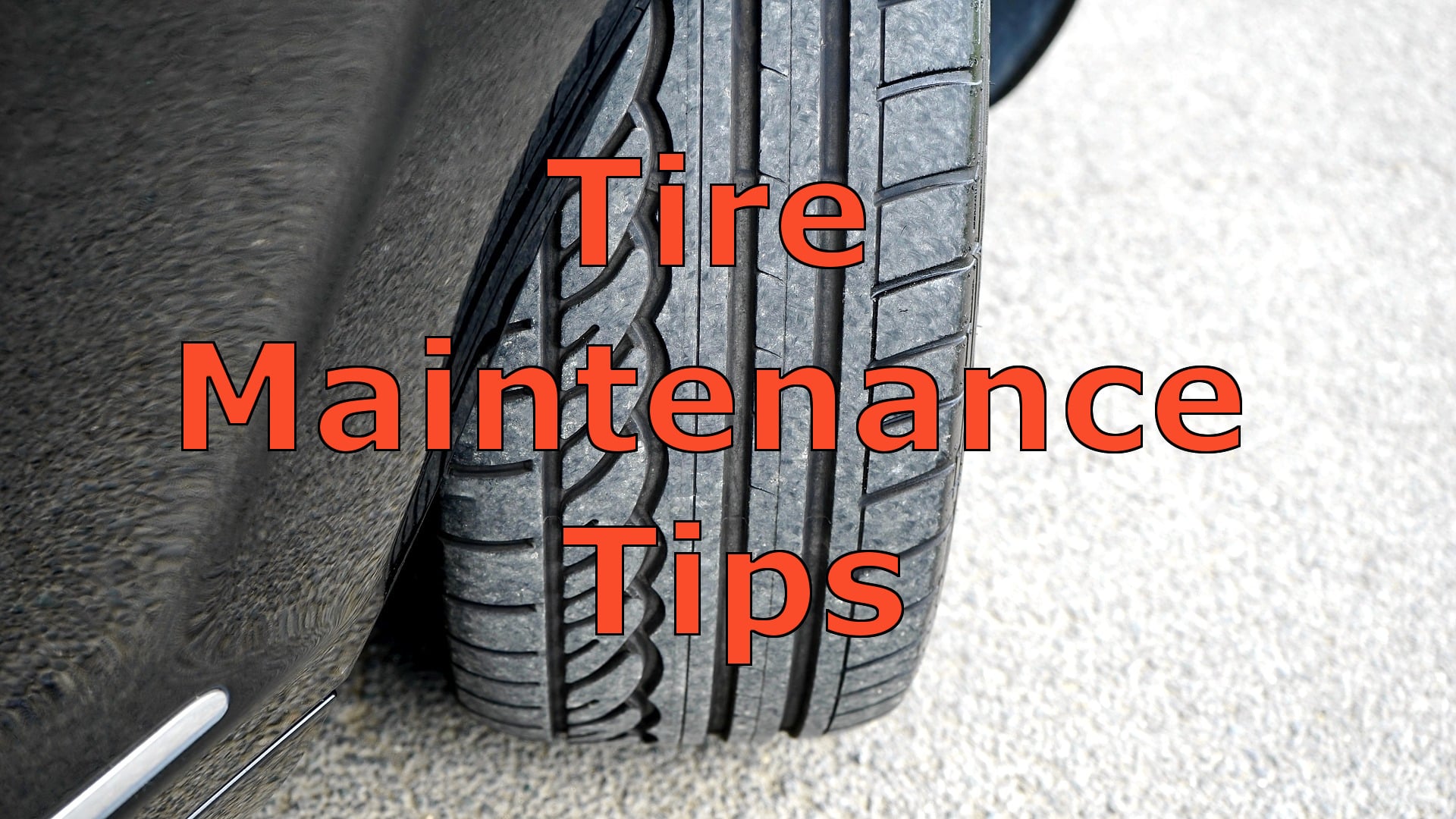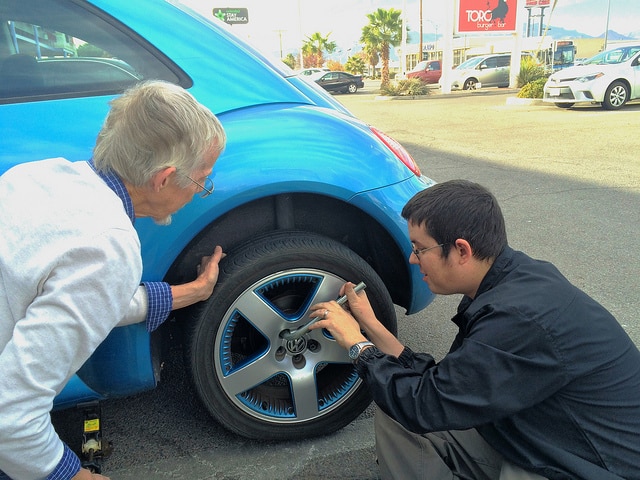
I’m sure you’ve heard that the tires are the only things that connect your car to the road. Bald tires will only lead to accidents and breakdowns. Nothing can be as true as these facts.
This article is about simple and easy to follow tire maintenance tips. If you don’t know a lot about cars (but you drive one every single day) then this is specifically intended for you.
If you’re a serious car enthusiast and you know a thing or two about automobiles, this article will add a heft of information on simple tire maintenance and prolong the life of your rollers.
Tire Maintenance
Think that tires require ZERO maintenance? Wrong. Similar to the engine in your car, the tires need adequate care and attention. Why? Because faulty tires can kill you. It sounds morbid, but it’s true. Bald or defective tires can either put you in the hospital or to an early grave. Think about your family every time they ride with you in the car. If you spend copious amounts of time inspecting the engine oil and the brakes, then you should allocate an equal amount of time checking the condition of your tires.
Tip #1 – Tire Pressure is Extremely Important
The single best thing that you can do to prolong the life of the tires in your vehicle is to regularly check the tire pressure yourself. This is the reason why it’s a good idea to invest in a good quality tire pressure gauge. Don’t rely on gas stations to check the check tire pressure.
You should check the tire pressure at least once a month or preferably once a week. If you drive a lot of miles, you should check the tire pressure before each trip.
Having proper tire pressure can also increase your fuel mileage, up to 3%!
What is the Correct Tire Pressure?
The answer will depend on the type of car that you’re driving. As a rule of thumb, the average tire pressure is 30 to 35 psi for an average-sized sedan. If you’re in doubt, don’t fret. You can check the recommended tire pressure in the owner’s manual. The tire pressure should also be indicated on a sticker on the driver’s door.
How to Check the Tire Pressure
Easy. All you need is a tire pressure gauge and you’re all set. Remember to check the pressure when the tires are cold, preferably before driving in the morning. This will give you a more accurate reading.
Step 1: Remove the tire valve cover.
Step 2: Insert the tip of the pressure gauge into the valve stem. You will hear a slight hiss which is the sound of air escaping from the tire. This is normal.
Step 3: The pressure gauge will pop out to reveal the tire pressure. If you’re using a digital tire pressure gauge, you might hear a short beep while the tire pressure is displayed on the screen.
Step 4: Compare the reading with the recommended tire pressure in the owner’s manual. If there is too much air, allow some of the air to escape until you get the right match. If there is too little air or if the tire pressure is below 25 psi, you should inspect the tires and the tire valves for leaks. Extremely low tire pressure is an indication of an impending problem with the tire.
Step 5: Don’t forget to check the air pressure of the spare tire. This is safe insurance against flats and tire blowouts. You don’t want a flat spare tire when you need it most.
After making sure the tire is in good shape, you will need to add air until you get the right tire pressure.
Do the above steps on all four tires in order to ensure that each tire is riding on the correct tire pressure.
Here’s a quick video to demonstrate the pressure checking process
Why Should I Constantly Inspect the Tire Pressure?
Underinflated tires will produce more rolling resistance as you drive. This means the car will require a deeper prod of the gas pedal to produce forward movement. The result is accelerated wear and tear, increased gas mileage, and a higher tendency of getting a flat tire from road debris. Underinflated tires will also produce poor handling, wobbly steering, and an unsettled ride. In fact, a tire that is underinflated by 20% will last 20% less. Considering a mileage of 70000 miles, your tires will only last 56000 miles if they are constantly underinflated.
Overinflated tires will produce a lot of tire noise or roar. It will also give your car a hard and stiff ride. Overly inflated tires will also cause the tires to overheat since heat will increase the tire pressure by as much as 4 to 5 psi.
But perhaps the biggest reason why you should always check the tire pressure is fuel economy. Properly inflated tires will save you money on fuel day-in and day out. Maintaining the correct tire pressure will significantly prolong the life of your tires so you can save a lot of money on tire maintenance as well.
Tip #2 – Checking the Tread Depth
After inspecting the air pressure, you should also check the tread depth of your tires. Tires are engineered to perform differently depending on the design and the size of the tread, but the basics are the same. Tires need a safe amount of tread to grip the tarmac and evacuate the water as you drive in the wet. Driving with bald tires is extremely dangerous especially in the winter. The treads in the tire will allow you to maintain proper control of the steering so you can drive safely and stop the car immediately when you press hard on the brakes.
It is easy to check the tread depth. I will forego discussing the penny method of checking the tread depth since there are far safer ways to do so.
The easiest and best way to check the tread wear is by referring to the tread wear indicators in the tire. The tread wear indicators are molded into the base of the main grooves. If the tread depth is the same level as the tread wear indicators, it is time to replace the tires.
Check Tire Wear Using a Tread Depth Gauge
It is also a good idea to invest in a good quality tire depth gauge (shown above). This device will take the guesswork away from the entire process.
Step 1: Park the car in a safe and level area. Engage the parking brake for good measure.
Step 2: Insert the tread depth gauge on the main tread grooves across the tire. The legal minimum tread depth is 2/32nd of an inch of the central three-quarters of the tread width.
Step 3: Proceed to do step 1 and step 2 on all four tires in your vehicle. If the tread depth is below the legal limit, it is time to buy new tires.
Tire Maintenance Tip #3 – Rotating the Tires

Periodically rotating the tires will ensure that each tire will wear evenly as you drive your vehicle. Rotating the tires to a different position in the car will also ensure that you get the most out of every millimeter of rubber.
The tires should be rotated every 6,000 to 8,000 miles. Check the owners’ manual to determine the manufacturer’s recommendation for your vehicle.
Types of Tire Rotation Techniques
1. Rearward Cross. The rearward cross is ideal for rear-wheel drive and four-wheel drive vehicles. The front left tire will be transferred to the rear right of the vehicle. The front right tire will be relocated to the rear left of the car. Both rear tires will be transferred to the front of the vehicle.
2. X-Pattern. The X-pattern is also recommended for rear-wheel drive, front-wheel drive, and four-wheel drive cars and SUVs. The front left tire will go to the rear right of the car while the rear right tire will be relocated to the front left. The front right tire will be transferred to the rear left and the rear left will be relocated to the front right. See the X-pattern here?
3. Forward Cross. The forward cross is ideal for vehicles with front-wheel drive. Both front tires will be relocated to the rear. The rear left tire will be relocated to the front right, while the rear right tire will be crossed over to the front left.
4. Front to Rear. The front-to-rear pattern is ideal for vehicles equipped with directional wheels and tires of the same size. The front left tire will be swapped with the rear left tire while the front right will be swapped with the rear right tire.
5. Side-to-Side. The side-to-side method is ideal for vehicles equipped with different sized wheels and non-directional tires. The front left tire will be swapped with the front right and vice versa. The same method is applied to the rear wheels and tires.
The type of tire rotation will depend on the make and model of your vehicle. Check the owner’s manual to determine which method is recommended for your car.
Tire Maintenance Tip #4 – Tire Alignment or Suspension Alignment
The tire alignment or suspension alignment should be checked at least every 4,350 miles. If you notice the following symptoms while driving, then you should have the alignment checked immediately:
- The vehicle drifts or pulls to one side in straight-line driving
- The steering does not naturally return to the center when you make a turn
- The steering wheel is not in the straight position when driving in a straight line
You should have the alignment checked if you notice irregular wear patterns on the tires, either on the shoulders or in the middle of the tread.
The suspension alignment should also be checked each time certain steering and suspension components are replaced. If you have a brand new car, the alignment should be checked every time the car is brought in for servicing.
When the mechanic is checking the alignment, the camber, caster, and the toe of the vehicle will be determined in order to maintain the proper suspension geometry.
Tire Maintenance Tip #5 – Tire Balancing
Tire balancing should be performed each time a new set of tires are bolted on to the wheels. The tire technician will stick counterweights on the inside of the wheel to balance the weight of the tire over the wheel.
If you notice steering wobble or vibration as you travel at speed, then the first thing to check is the tire balancing on the front wheels, especially after purchasing and installing a new set of tires.
Tire balancing should be performed by a professional. The process involves the use of a balancing machine to determine the heavy spots in each particular wheel. The technician will add counterweights either on the interior or the exterior of the wheel to balance the centrifugal forces on the wheel as the tire rotates.
Conclusion
These tire maintenance tips will help you save money. Remember to take the time to check the air pressure and inspect for irregular wear every week in order to extend the life of your tires.
